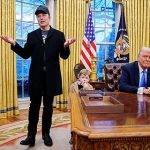
Why have central banks settled on a 2 percent price inflation target? Project Syndicate asked four economists about this target and whether it is still appropriate. I’ll summarize their answers and then consider Mises’s position on “stabilization policy.”
Four Economists’ Answers to “Is 2 Percent Really the Right Inflation Target for Central Banks?”
Michael Boskin, Stanford University professor, Hoover Institution senior fellow, and former chair of the Council of Economic Advisers to George H.W. Bush, concludes that 2 percent is probably about right, mainly due to the negative consequences of a higher target. He considers whether a higher target could be maintained in a stable way as it comes with more variations in the returns to capital, less credibility regarding the price stability component of the dual mandate, and less restraint on government spending.
John Cochrane, who is also a Hoover Institution senior fellow, suggests that the central bank and the government should not target a price inflation rate but the price level instead. The resulting stability would give confidence to firms, investors, and government bond buyers. For Cochrane, the most important thing is maintaining stable expectations so that inflation is one less thing for people to worry about as they make their economic decisions.
Brigitte Granville, professor at Queen Mary University of London and the author of Remembering Inflation, thinks that 5 percent is a better target. She cites empirical research that shows no effect on real economic growth when price inflation is in the 5 percent range. She does caution that stability is key, however. Her reasoning for a 5 percent target doesn’t make sense and is contradictory: “[Falling to a 2 percent target] would mean further compression of real household incomes,” but she also says “a recovery in real average wages, alongside higher-than-2% inflation, would provide a much-needed boost to productivity, as it would motivate workers . . . and create incentives for more labor-substituting investment.” Your guess is as good as mine.
Finally, Kenneth Rogoff, professor at Harvard University and former chief economist of the International Monetary Fund, says that a higher target should be adopted due to nominal wage rigidities and the zero lower bound for nominal interest rates. More inflation means that employers can more easily pay workers less in real terms without having to decrease nominal wages. Also, a higher long-term price inflation rate would give the central bank more room to cut interest rates in a crisis.
Rogoff says that the ability to impose negative interest rates would allow central banks to continue to target 2 percent. He gives some radical ideas on how to do that, like “phasing out large-denomination currency notes” and “relaxing the one-to-one exchange rate between the digital- and paper-currency dollar.” (!)
What Would Mises Say?
You’ll notice a theme of stability in each of the answers. Mises argued at great length against “stabilization policy”—the idea that the purchasing power of money should be stabilized by monetary policy. He said that this fallacy stems from the god complex of some economists and the desire to make economics more like physics (Mises swatted down the analogy of money as a yardstick, which was employed by John Cochrane in the Project Syndicate article). Mises’s arguments ranged from the fundamental (the economy is ever changing) to the practical (no measure of the purchasing power of money can be constructed for the whole economy).
The value of money shouldn’t be stabilized because there is nothing stable about a healthy, progressing, dynamic economy. Consumer preferences, technology, natural resources, and a million other variables are constantly changing, and entrepreneurs are tasked with arranging production today in light of their anticipations about future market conditions. If technology changes in such a way that allows output to expand and the result is price deflation, so be it. If consumers decide to increase consumption relative to their savings, then we should allow the prices of consumer goods and factors of production to adjust accordingly.
Any attempt to prevent such changes will abrogate the tendency for entrepreneurs’ plans to align with consumer demand. Worse, the monetary policy intended to stabilize the economy will cause even greater destabilization in the form of financial crises and business cycles.
Moreover, by targeting price inflation—even at the moderate-sounding rate of 2 percent—inflation becomes institutionalized, and all of its effects metastasize throughout the economy and culture. Saving is discouraged, and excessive risk is encouraged. The government grows in size and scope. The economy becomes overly “financialized.” Income and wealth inequality become exacerbated as Cantillon effects create winners and losers.
Thus, stabilization policy is destabilization policy, and the moderate position—which would bring about just the right amount of stability and dynamism—is to end the Federal Reserve and separate money and state.






